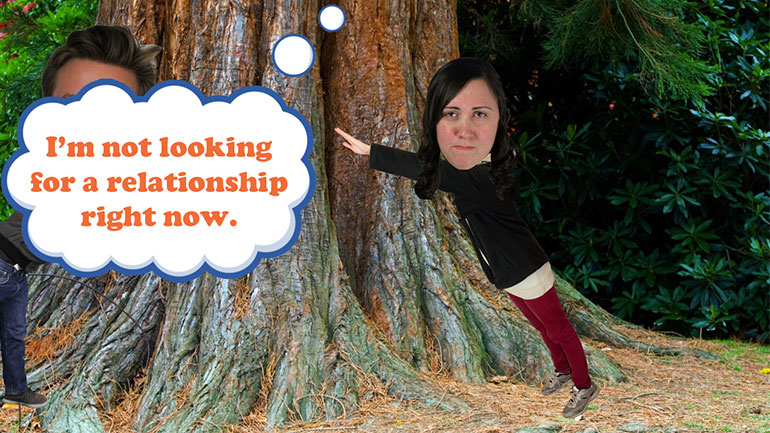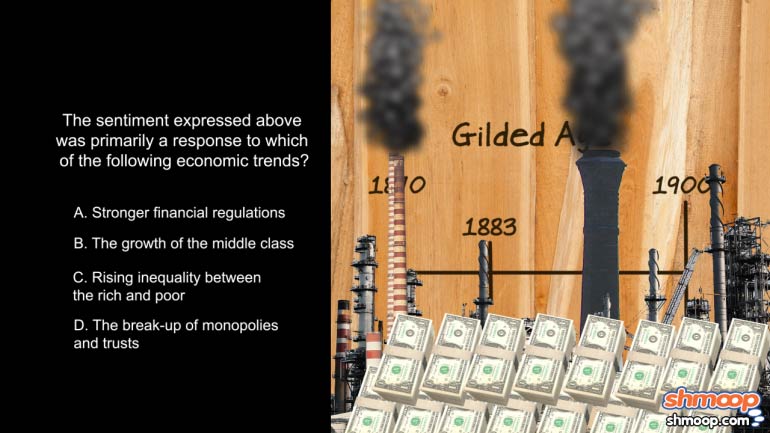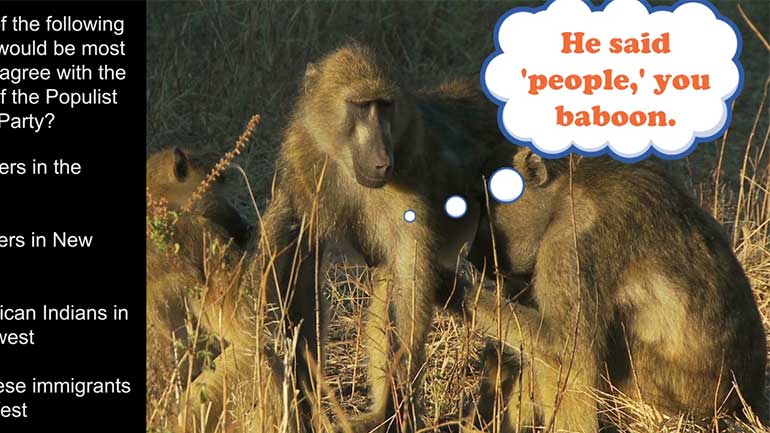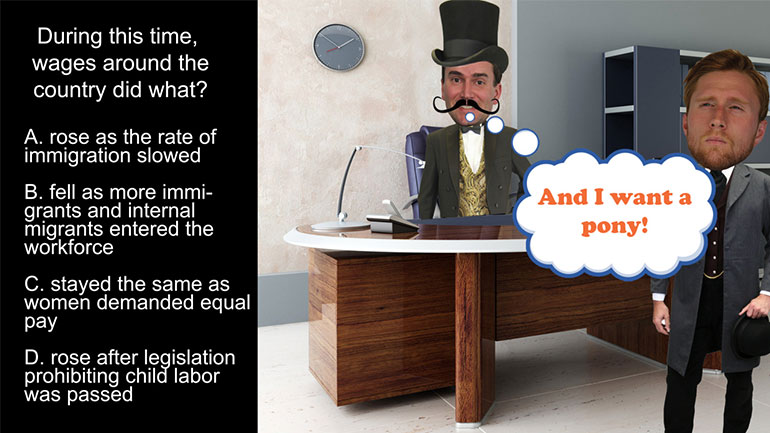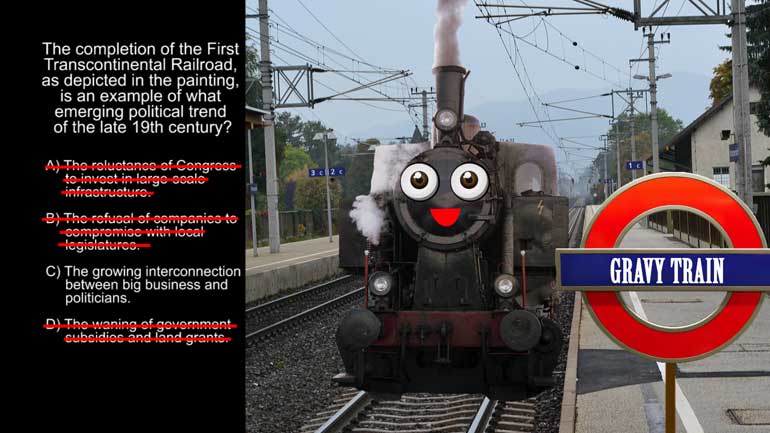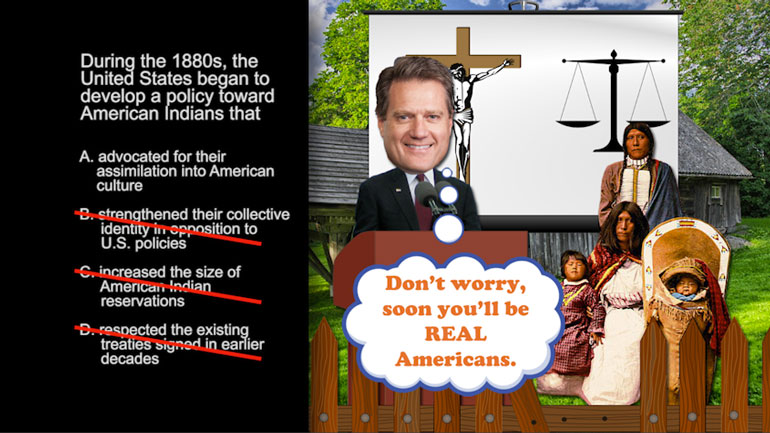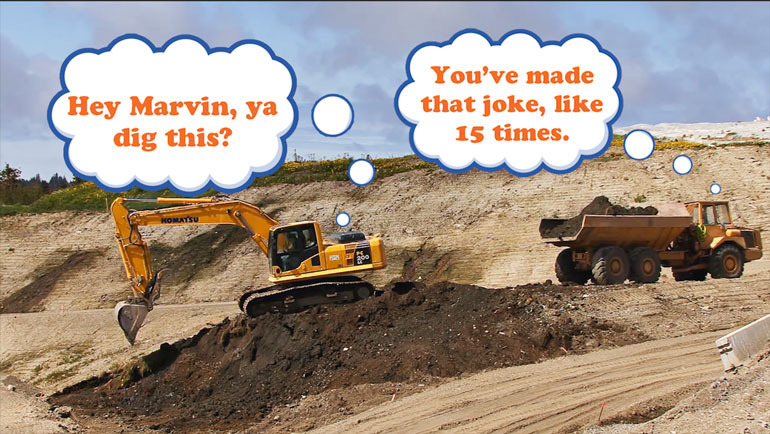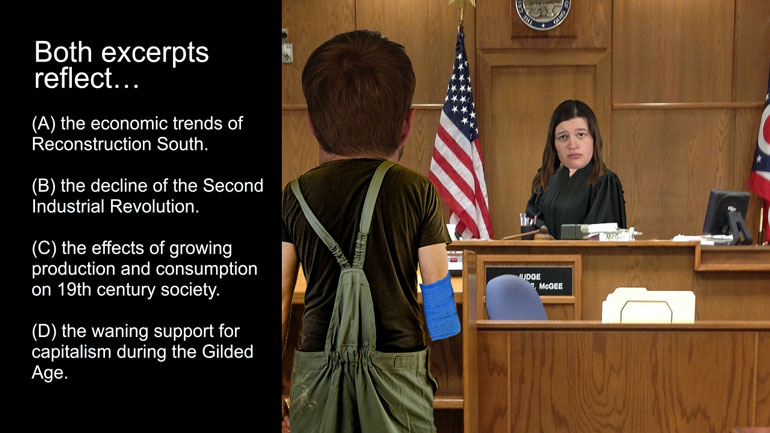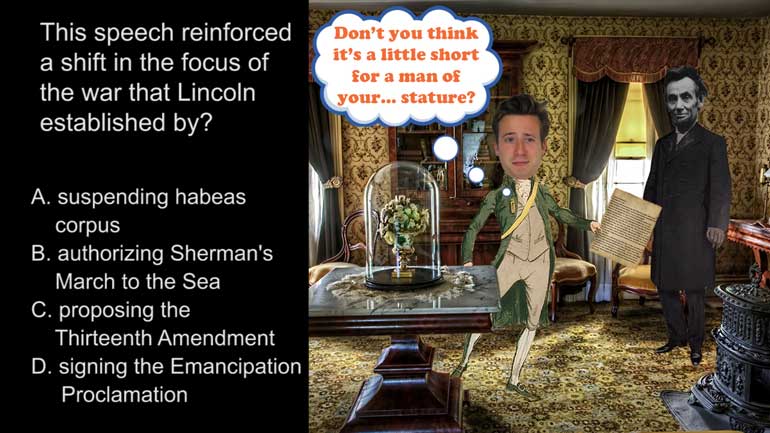ShmoopTube
Where Monty Python meets your 10th grade teacher.
Search Thousands of Shmoop Videos
Period 6: 1865-1898 Videos 11 videos
AP U.S. History 2.3 Period 6: 1865-1898. The conservation movement, as expressed above, emerged at this time...why?
AP U.S. History 1.1 Period 6: 1865-1898. The sentiment expressed above was primarily a response to which of the following economic trends?
How did the wealthy justify their status and privilege? Other than the customary way of having large gold statues built in their likeness with sign...
AP U.S. History 1.5 Period 6: 1865-1898 227 Views
Share It!
Description:
AP U.S. History 1.5 Period 6: 1865-1898. During this time, wages around the country did what?
Transcript
- 00:00
[ musical flourish ]
- 00:03
And here's your Shmoop du jour, brought to you by the labor supply,
- 00:07
or where babies come from.
- 00:10
All right, take a look at this excerpt.
- 00:11
The Populist Party... [ mumbles ]
Full Transcript
- 00:14
[ mumbling continues ]
- 00:17
All right, and the question:
- 00:18
During this time, wages around the country... did what?
- 00:22
And here are your potential answers. [ glugging ]
- 00:26
All right.
- 00:27
So, first off, we need to figure out exactly what was happening
- 00:30
in the country in the late 19th century.
- 00:32
That's like 1880s and 90s.
- 00:35
Well, all that industrialization meant that there were
- 00:37
lots of jobs available, sure,
- 00:39
but companies were simultaneously growing in power
- 00:43
and they might have had a thought or two about how much
- 00:45
to pay their employees.
- 00:47
Let's keep that in mind as we check out the answers
- 00:50
and think forward about the Grapes of Wrath.
- 00:53
Well, during this time, did wages around the country A -
- 00:55
rise as the rate of immigration slowed?
- 00:58
Well, actually, with all those new factory jobs, immigrants were
- 01:01
tripping over each other to travel to the U.S. for work.
- 01:04
Could wages at the time have C - stayed the same as
- 01:08
women demanded equal pay?
- 01:10
Well, women were starting to enter the workforce at a higher number than ever before,
- 01:13
but that whole equal pay conversation still hasn't been resolved.
- 01:17
So that knocks out C, too.
- 01:19
Could wages at the time have D -
- 01:21
risen after legislation prohibiting child labor was passed?
- 01:25
Hmm... Those companies probably paid child workers less than
- 01:29
their adult counterparts, so if all of a sudden adults began
- 01:32
taking over jobs once done by kids, it's not likely
- 01:35
they would've been handed a raise.
- 01:37
That must mean wages at the time B - fell
- 01:40
as more immigrants and internal migrants
- 01:43
entered the workforce. Internal migrant, like someone from
- 01:46
Nebraska moving to a factory in California.
- 01:49
The labor supply increased at the same time that companies
- 01:52
got more powerful, so management gained the ability to
- 01:55
fire employees who spoke out against brutal working conditions
- 01:58
since there were literally thousands more ready and willing to take their place.
- 02:02
All work and no ability to negotiate a fair wage
- 02:06
makes Jack a very replaceable boy.
- 02:09
[ buzz ] [ door opens ]
Related Videos
AP U.S. History Exam 2.45. The journey shown on the map was an example of...what?
AP U.S. History Exam 2.26. This speech reinforced a shift in the focus of the war that Lincoln established by...what?
What did the Spanish messengers bring with them to North America? Hint: you probably wouldn't be thrilled to get this for your next birthday.
AP U.S. History Diagnostic 24. How did the United States choose containment over the National Security Council Report in Latin America?
AP U.S. History Exam 2.25. In writing the Gettysburg Address, Lincoln was still working to win over Northern voters who believed that...what?
